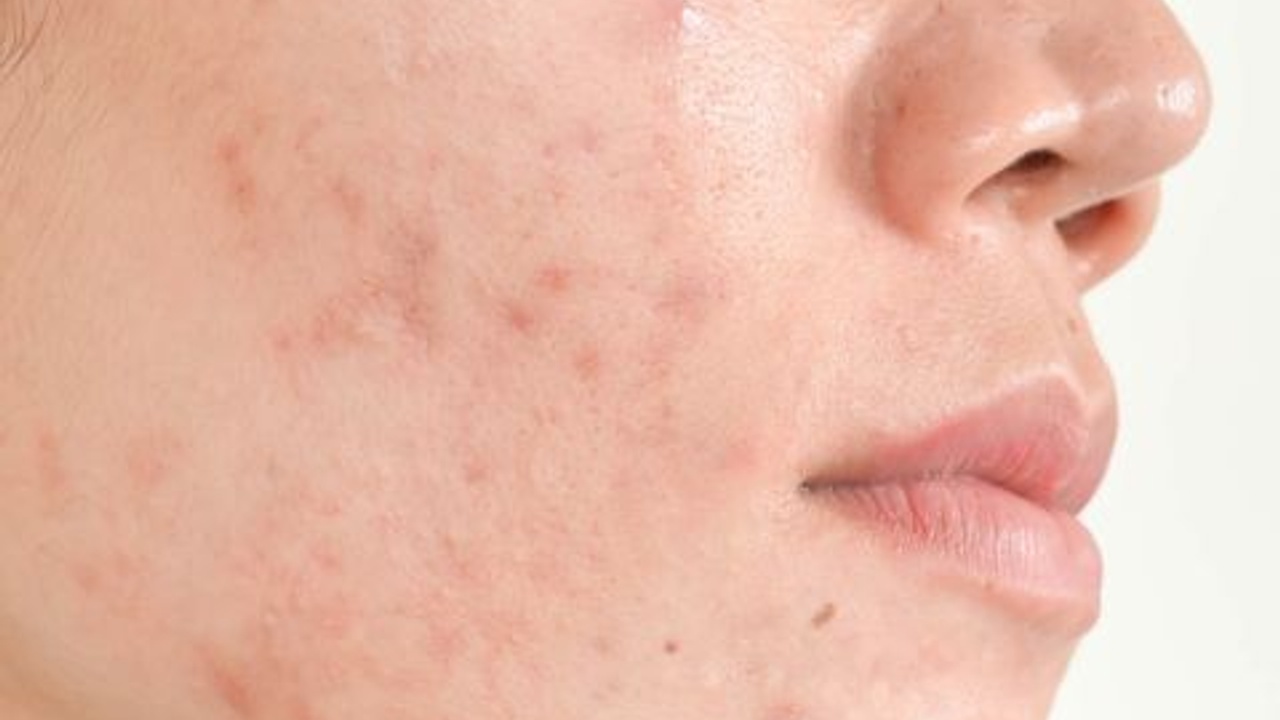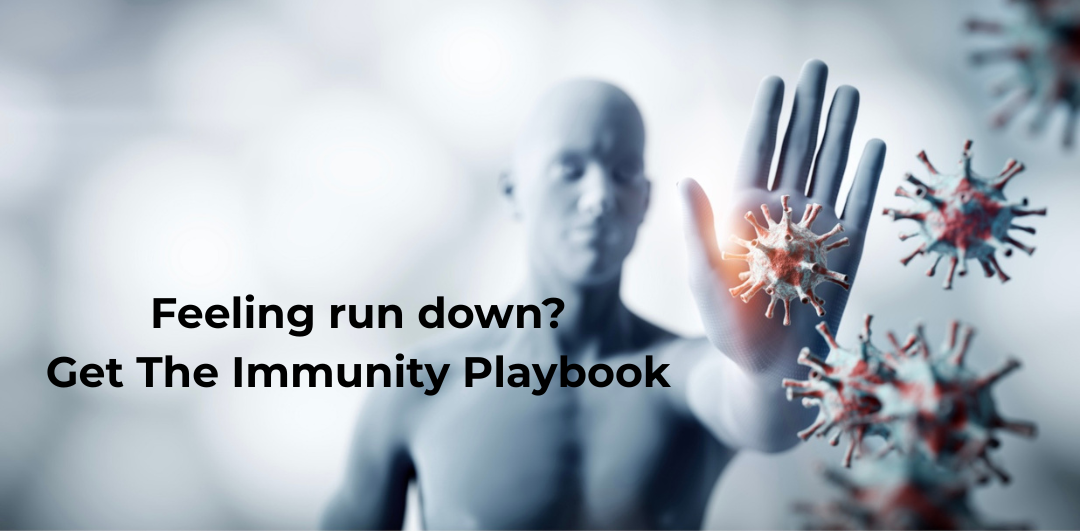What You Should Know About Hormonal & Cystic Acne
Apr 21, 2021
Hormonal acne (aka cystic acne) is different than run-of-the-mill pimples. Since hormonal acne is linked to (you guessed it) your hormones, you’re likely to experience it around your period or under times of stress (when cortisol is higher). In fact, experts believe that hormonal acne is caused by hormonal fluctuations that increase oil production in the pore. However, it can be caused by food sensitivities and nutrient deficiencies as well. This kind of acne usually appears in an intense form that results in large, inflamed cysts and nodules that appear on the skin, particularly on the jawline, chin and forehead. These breakouts tend to be painful and can sometimes result in scarring.
HOW DO YOU KNOW IF YOU HAVE IT?
How do you know you’re suffering from hormonal acne and not run-of-the-mill pimples? If you’re experiencing one or more of the following, it’s most likely hormonal:
- You’re no longer in your teens. When you were a teen, did you imagine that you’d leave acne behind once you entered your 20s? But for some, this problem will resurface well into your 30s, 40s and 50s! In fact, 20s are one of the peak times for hormonal acne to occur (menopause is another, no surprise).
- Breakouts happen once a month but tend to stick around. Hormonal acne tends to occur in a cyclical pattern, just like your menstrual cycle (and yes, that includes post-menopause because you still experience those hormonal fluctuations, just to a lesser extent).
- Cysts vs. Blackheads/whiteheads. Hormonal acne tends to be more inflammatory than regular blackheads or whiteheads. These cysts are more like dense and larger lumps that are deeper under your skin. Plus, they tend to pop up in the same exact places making them chronic or subacute.
- Cysts appear on chin/jawline. Hormonal acne tends to occur in the same spot due to oil production patterns. So, if you’re noticing a blemish keeps reappearing on your chin month after month, there’s a good chance it has to do with your hormones. Hormonal breakouts tend to appear around the chin and jawline because the sebum level is higher than other parts of the face.
- You’re super stressed! Enter the stress hormone – cortisol… being super stressed means your body will produce more cortisol, which throws the rest of your hormones out of whack. If you’re dealing with an incredibly stressful time (like we all are right now) and acne pops up, it’s most likely hormonal.
WHAT CAN YOU DO TO REMEDY?

Great. You’re stressed, you’re hormonal, and now you’ve got painful acne on your face. What do you do now?? If you dealt with acne a lot as a teen, you may remember using antibiotics and retinol. BUT, now that you’re older you know that these can come with some serious side effects. Not to worry though because there are plenty of natural remedies to hormonal acne!
- Healthy skincare routine – To encourage healthy skin turnover, use effective exfoliants that aren’t too harsh (glycolic acid, for example). Use oil-free and unscented moisturizers (AFTER you make sure your face is clean). Avoid toxic beauty products as much as you’re able (read more about that HERE). Finally, sunscreen is key (with the caveat that you should be aware of what exactly you’re using – read THIS)!
- Healthy diet – By now you know that what you eat is one of the most effective ways of making changes to your body. Sometimes it’s foods to avoid, sometimes it’s those to include. Let’s start with what you should be avoiding: dairy, sugar, caffeine, low-fiber & highly processed foods, fried and fast foods. Those things that should definitely be in your diet? Fiber-rich, high-zinc, high in Vitamin A, good quality proteins, cruciferous veggies to improve liver function.
- Rest & exercise – It can be hard to manage at times, but a good night’s sleep is one of the most important things you can do for your body and skin. Rest doesn’t just include that though! Rest also includes time to de-stress whether it’s a quick walk, meditation, talking with a friend, or just 5 minutes by yourself. And I can never stress the importance of exercise enough – regular exercise is needed to help your body detoxify and for improving mood. Really, just a 20-minute walk a day is a great place to start!
- Towels & Linen – Wait, what? When you’re experiencing an acne breakout, you’re likely more aware of not touching your face to make things worse. But are you thinking about the OTHER things that are touching your face like towels and sheets? To reduce the chances of irritation and sensitivity, it’s a smart idea to avoid washing these items with strong detergents and bleaches. Also be sure to change your towels and pillowcases frequently to avoid the presence and spread of bacteria, which will only make your acne worse.
- No popping! – Why is it that when we have pimples, we’re so tempted to pop them?? Don’t!! Not only will this be ineffective due to the depth of cystic acne, but it will make things worse because you’re a) touching your face, b) spreading the breakout underneath the skin, and c) potentially causing scarring.
- Supplements – Supplements are great at any time but for hormonal acne you specifically want the following:
- Probiotics – The healthier your gut is, the better your balance of good versus bad bacteria. When you consume probiotics, they line your gut forming a sealed barrier that helps prevent inflammation that can trigger acne.
- Chasteberry – Vitex agnus castus (or chasteberry) is a “woman’s herb” that’s been traditionally used for hormonal imbalances. Current research shows chasteberry can support healthy hormone levels, relieve pre-menstrual symptoms, and be an effective natural hormonal acne treatment.
There’s one more supplement that I highly recommend to help treat hormonal acne – my favorite one! Everything you need to know is below.
EVERYTHING DIM
One of the most effective ways to help with hormonal and cystic acne is a compound called DIM (or diindolylmethane, if you want to get fancy about it). DIM is a compound found in cruciferous veggies that has been found to deal with a variety of issues such as PMS, acne, mood swings, and more. It restores healthy hormone balance by adjusting the level of bad estrogen vs. good estrogen, as well as blocking aromatase (which converts testosterone to estrogen).
Since hormonal and cystic acne is a result of imbalanced estrogen and testosterone, supplementing with DIM helps prevent bad estrogen pathways while strengthening the good estrogen and testosterone. When your hormones are happy and balanced, your skin has better support in staying clean and clear.
While DIM is mostly considered safe for all, people who are pregnant or breastfeeding, are cancer patients, or have kidney disease should avoid it. Generally, however, there are very few side effects for people who taking DIM for hormonal imbalances, hormonal acne, and the like. Side effects include headaches, nausea and gas.
Experiencing hormonal and cystic acne is so frustrating but it’s not hopeless! You can improve your situation with a little bit of lifestyle change and help. If you are ready to tackle this issue and fix it for good, I’m ready to help you do just that! Book a consult with me so we can figure out the best plan of action for you.


